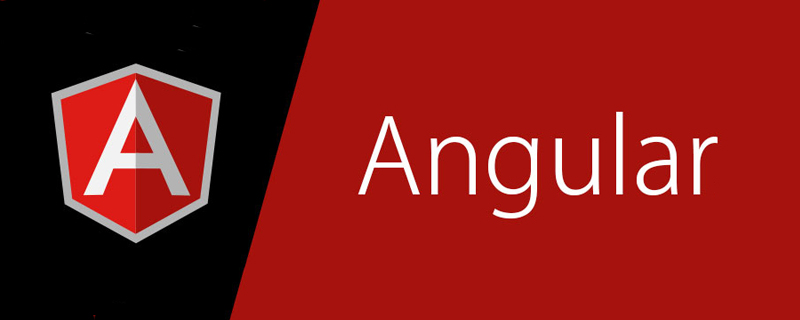This article will take you to understand the structural instruction mode in Angular, and introduce what the structural instruction is and how to use it. I hope it will be helpful to everyone!

In Angular, there are two types of directives. Attribute directivesModify the appearance or behavior of the DOM element. Structural directivesAdd or remove DOM elements.
Structural directives are one of the most powerful features in Angular, yet they are frequently misunderstood.
If you are interested in learning structural directives, then let’s continue reading now and understand what they are, what they are used for and how to use them in your projects. [Related tutorial recommendations: "angular tutorial"]
What will you learn
In this article, you will learn aboutAngular Knowledge points of structural directive pattern. You'll know what they are and how to use them.
After studying this article, you will better understand these instructions and use them in actual projects.
What are Angular structural directives?
Angular Structural directives are directives that change the structure of the DOM. These instructions can add, remove or replace elements. Structural directives have the * symbols before their names.
In Angular, there are three standard structured directives.
-
*ngIf- Conditionally include a template (i.e. conditional rendering template) based on the Boolean value returned by the expression -
*ngFor- Traverse the array -
*ngSwitch- Render each matching is graph
Below? is an example of a structured directive. The syntax looks like this:
<element></element>
The conditional statement must be true or false.
<div>{{worker.name}}</div>
To use structural directives, we need to add an element with the directive in the We add some simple We use The The complete us Use the Our component Translator added: This command is very useful in actual development We use In We have a When the condition value is If you want to add or remove an element from The best rule is: When we are thinking about manipulating the DOM, then it is time to use structural directives. Structural directives are an important part of I hope that through this article, readers can better understand how to use these instructions and when to use these modes. This article is a translation, in the form of free translation. Original address: https://www.freecodecamp.org/news/angular-structural-directive-patterns-what-they-are-and-how-to-use-them/ For more programming-related knowledge, please visit: Programming Video! ! Angular Generates an element with <ng-template></ng-template> and then applies the *ngIf directive. This converts it to a property binding within square brackets [], such as [ngIf]. The remainder of <ng-template></ng-template>. For example: How do Angular structural directives work?
HTML template. Then add, delete or replace elements based on the conditions or expressions we set in the directive. Example of structural directive
HTML code. app.component.html The file content is as follows: <div>
<h1>
Welcome
</h1>
</div>
<h2> <app-illustrations></app-illustrations>
</h2>
How to use the
*ngIf command*ngIf to determine whether to display or remove an element based on conditions. ngIf is very similar to if-else. *ngIf directive removes the HTML element when the expression is false. When true, a copy of the element will be added to the DOM. *ngIf code is as follows: <h1>
<button>ng-if illustration</button>
</h1>
<div>
<h2 id="Hello">Hello </h2>
<p>Good morning to you,click the button to view</p>
</div>
<hr>
<p>Today is Monday and this is a dummy text element to make you feel better</p>
<p>Understanding the ngIf directive with the else clause</p>
How to use the
*ngFor command*ngFor directive to iterate over the array. For example:
TypeScript File:import { Component, OnInit } from '@angular/core';
@Component({
selector: 'app-illustrations',
templateUrl: './illustrations.component.html',
styleUrls: ['./illustrations.component.css']
})
export class IllustrationsComponent implements OnInit {
workers: any = [
'worker 1',
'worker 2',
'worker 3',
'worker 4',
'worker 5',
]
constructor() { }
ngOnInit(): void {
}
}
How to use
*ngSwitch CommandngSwitch to decide which element to render based on different conditional statements. The *ngSwitch directive is very similar to the switch statement we use. For example: <div>
<p>cups</p>
<p>Vegetables</p>
<p>Trousers</p>
<p>My Shopping</p>
</div>
typescript: Myshopping: string = '';
MyShopping variable which has a default value for rendering in the module A specific element that satisfies the condition. true, the relevant elements will be rendered into DOM, and the remaining elements will be ignored. If no element matches, the element of *ngSwitchDefault is rendered into DOM. When do we need to use structural directives in Angular?
DOM, you should use the structure directive. Of course, we can also use them to change element CSS styles, or add event listeners. You can even use them to create a new element that didn't exist before. Summary
Angular and we can use them in many ways.
The above is the detailed content of What are structural directives in Angular? how to use?. For more information, please follow other related articles on the PHP Chinese website!
 Angular学习之聊聊独立组件(Standalone Component)Dec 19, 2022 pm 07:24 PM
Angular学习之聊聊独立组件(Standalone Component)Dec 19, 2022 pm 07:24 PM本篇文章带大家继续angular的学习,简单了解一下Angular中的独立组件(Standalone Component),希望对大家有所帮助!
 angular学习之详解状态管理器NgRxMay 25, 2022 am 11:01 AM
angular学习之详解状态管理器NgRxMay 25, 2022 am 11:01 AM本篇文章带大家深入了解一下angular的状态管理器NgRx,介绍一下NgRx的使用方法,希望对大家有所帮助!
 项目过大怎么办?如何合理拆分Angular项目?Jul 26, 2022 pm 07:18 PM
项目过大怎么办?如何合理拆分Angular项目?Jul 26, 2022 pm 07:18 PMAngular项目过大,怎么合理拆分它?下面本篇文章给大家介绍一下合理拆分Angular项目的方法,希望对大家有所帮助!
 聊聊自定义angular-datetime-picker格式的方法Sep 08, 2022 pm 08:29 PM
聊聊自定义angular-datetime-picker格式的方法Sep 08, 2022 pm 08:29 PM怎么自定义angular-datetime-picker格式?下面本篇文章聊聊自定义格式的方法,希望对大家有所帮助!
 浅析Angular中的独立组件,看看怎么使用Jun 23, 2022 pm 03:49 PM
浅析Angular中的独立组件,看看怎么使用Jun 23, 2022 pm 03:49 PM本篇文章带大家了解一下Angular中的独立组件,看看怎么在Angular中创建一个独立组件,怎么在独立组件中导入已有的模块,希望对大家有所帮助!
 手把手带你了解Angular中的依赖注入Dec 02, 2022 pm 09:14 PM
手把手带你了解Angular中的依赖注入Dec 02, 2022 pm 09:14 PM本篇文章带大家了解一下依赖注入,介绍一下依赖注入解决的问题和它原生的写法是什么,并聊聊Angular的依赖注入框架,希望对大家有所帮助!
 Angular的:host、:host-context、::ng-deep选择器May 31, 2022 am 11:08 AM
Angular的:host、:host-context、::ng-deep选择器May 31, 2022 am 11:08 AM本篇文章带大家深入了解一下angular中的几个特殊选择器:host、:host-context、::ng-deep,希望对大家有所帮助!
 深入了解angular中的@Component装饰器May 27, 2022 pm 08:13 PM
深入了解angular中的@Component装饰器May 27, 2022 pm 08:13 PMComponent是Directive的子类,它是一个装饰器,用于把某个类标记为Angular组件。下面本篇文章就来带大家深入了解angular中的@Component装饰器,希望对大家有所帮助。


Hot AI Tools

Undresser.AI Undress
AI-powered app for creating realistic nude photos

AI Clothes Remover
Online AI tool for removing clothes from photos.

Undress AI Tool
Undress images for free

Clothoff.io
AI clothes remover

AI Hentai Generator
Generate AI Hentai for free.

Hot Article

Hot Tools

Dreamweaver Mac version
Visual web development tools

VSCode Windows 64-bit Download
A free and powerful IDE editor launched by Microsoft

MinGW - Minimalist GNU for Windows
This project is in the process of being migrated to osdn.net/projects/mingw, you can continue to follow us there. MinGW: A native Windows port of the GNU Compiler Collection (GCC), freely distributable import libraries and header files for building native Windows applications; includes extensions to the MSVC runtime to support C99 functionality. All MinGW software can run on 64-bit Windows platforms.

PhpStorm Mac version
The latest (2018.2.1) professional PHP integrated development tool

SAP NetWeaver Server Adapter for Eclipse
Integrate Eclipse with SAP NetWeaver application server.







